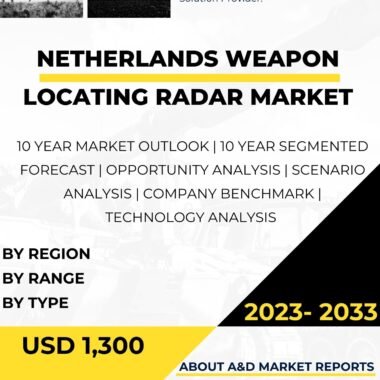Description
Close-in Weapons Systems (CIWS) are a crucial component of the United States’ military arsenal, providing a last line of defense against incoming threats, such as anti-ship missiles, aircraft, and other high-speed projectiles. CIWS are designed to engage and destroy these threats at close range, protecting naval vessels and ground installations from potential damage or destruction. This article will explore the development, types, capabilities, and significance of U.S. Close-in Weapons Systems in supporting the nation’s defense and military operations.
The development of Close-in Weapons Systems in the United States can be traced back to the mid-20th century when advances in anti-ship missiles and aircraft posed new challenges for naval and ground defenses. The need for rapid and effective response to these threats led to the development of CIWS as a reliable and efficient means of protection.
Early CIWS systems were manually operated, requiring significant human intervention to track and engage targets. However, with advancements in radar, computing, and fire control technology, automated CIWS systems emerged, enhancing their speed and accuracy.
One of the earliest CIWS systems used by the U.S. Navy was the Phalanx Close-In Weapon System, developed in the 1970s. Phalanx is a fully automated CIWS that utilizes a six-barreled Gatling gun and advanced radar to detect, track, and engage incoming threats with a high rate of fire.
Phalanx became a significant asset in protecting naval vessels from anti-ship missiles and aircraft, particularly during the Falklands War in 1982, where it successfully intercepted multiple Exocet missiles targeting British warships.
In the 21st century, the U.S. military continued to invest in CIWS capabilities, introducing new and more advanced systems to address evolving threats.
The SeaRAM is an evolution of the Phalanx system, integrating the sensors and software of the Rolling Airframe Missile (RAM) with the Phalanx’s gun system. The SeaRAM provides extended engagement range and improved defense against anti-ship missiles and other airborne threats.
Another significant CIWS platform used by the U.S. Navy is the Evolved SeaSparrow Missile (ESSM) system, which combines the capabilities of a surface-to-air missile with the flexibility of a CIWS. The ESSM is capable of engaging multiple targets simultaneously, making it effective against a variety of threats.
On land, the U.S. Army employs the Counter-Rocket, Artillery, Mortar (C-RAM) system to protect forward operating bases and critical assets from incoming rockets, artillery, and mortar rounds. The C-RAM uses a combination of radar, sensors, and interceptors to neutralize incoming threats before they reach their targets.
One of the most advanced CIWS systems used by the U.S. Navy is the Laser Weapon System (LaWS). LaWS utilizes directed energy technology, emitting a powerful laser beam to disable and destroy small boats, drones, and other threats. LaWS provides a cost-effective and highly accurate defense solution, with reduced operational costs compared to traditional kinetic weapons.
The significance of U.S. Close-in Weapons Systems lies in their ability to provide a last line of defense against incoming threats, ensuring the protection of naval vessels, ground installations, and personnel. CIWS capabilities are critical for force protection, as they provide a rapid response to unexpected or highly maneuverable threats that may penetrate other defensive layers.
CIWS platforms enhance the survivability of naval assets, as they can engage multiple threats simultaneously and intercept incoming projectiles close to their targets, reducing the risk of significant damage.
Furthermore, CIWS systems contribute to the overall deterrence strategy, as the presence of a robust close-in defense capability signals to potential adversaries that U.S. assets are well-protected and that any attempt to engage them will be met with a formidable response.
In addition to their defensive capabilities, CIWS systems offer a cost-effective solution for protecting critical assets. Compared to more expensive missile interceptors, CIWS guns have a lower cost per engagement, making them suitable for a high-volume threat environment.
CIWS platforms also support joint and coalition operations, as they can be integrated into a wide range of naval and ground-based systems. The interoperability of CIWS with other defense systems enhances overall military effectiveness and supports multinational cooperation.
The development and modernization of U.S. Close-in Weapons Systems involve continuous research and investment in cutting-edge technologies. The U.S. Department of Defense (DoD) collaborates with defense contractors, such as Raytheon, Lockheed Martin, and Northrop Grumman, to enhance CIWS capabilities and address emerging challenges and threats.
Challenges in CIWS development include ensuring continuous improvement in accuracy and reliability to effectively counter high-speed and maneuverable threats. Integration with advanced radar and sensor systems is essential for early detection and tracking of incoming threats, providing sufficient time for CIWS systems to respond.
The proliferation of advanced anti-ship missiles and other high-speed projectiles presents an ongoing challenge for CIWS capabilities. The U.S. military must continually adapt and upgrade CIWS platforms to stay ahead of potential adversaries’ evolving capabilities.
Additionally, as naval and ground defense technologies evolve, CIWS platforms must be able to seamlessly integrate with other components of layered defense systems, such as surface-to-air missiles, electronic warfare systems, and networked sensors.
In conclusion, U.S. Close-in Weapons Systems are a critical component of the nation’s defense capabilities, providing a last line of defense against incoming threats for naval vessels, ground installations, and critical assets. CIWS platforms have evolved from manually operated systems to highly automated, sophisticated defense systems capable of engaging multiple threats simultaneously.
CIWS capabilities enhance force protection, contribute to deterrence, and offer a cost-effective solution for safeguarding military assets. Ongoing research and investment in CIWS technologies are essential to address emerging challenges and maintain the United States’ military superiority in defending against CBRN threats and other high-speed projectiles. As potential adversaries continue to develop advanced capabilities, U.S. CIWS efforts will remain crucial in ensuring the safety and security of U.S. military assets and personnel




